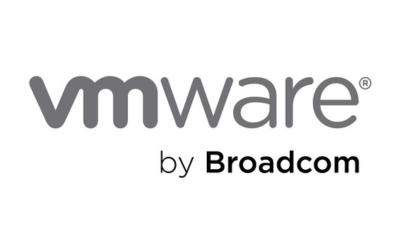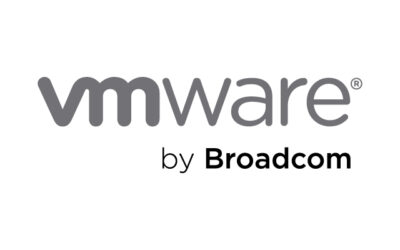Forty-seven percent of the UK workforce worked from home half of the time in mid 2020.
It’s an eye-opening statistic that reveals the dramatic impact of the pandemic. Naturally, this has accelerated the need for effective Virtual Desktop Infrastructure (VDI). However, with a range of options available, it can be hard to choose the right service.
To help, we’ll examine four of the most popular platforms available. For each, we’ll list the overall pros and cons, as well as recommendations for when that solution will suit you.
It’s also important to note that Redcentric can deliver any one of these four virtual desktop options. We always solve for client needs and deliver the solution that’s best matched to them.
The four desktop virtualisation solutions we’ll look at are:
- Microsoft Azure Virtual Desktop (AVD) (formerly Windows Virtual Desktops – WVD)
- Amazon WorkSpaces
- Citrix
- Microsoft Remote Desktop Services (RDS)
Microsoft Azure Virtual Desktop (AVD)
Microsoft AVD virtualises the Windows operating system via a Microsoft Azure-based system. Launched in September 2019 as Windows Virtual Desktop, it’s primarily designed for enterprise users. As well as changing the name Microsoft have just announced the public preview of a number of new features.
The good
- Excellent security.AVD has more compliance certifications than the other solutions.
- Strong cost efficiency.AVD is closely linked with Microsoft 365 subscription-based licensing. It easily brings additional value by utilising the wider suite of products on offer.
- Many already use Microsoft.With 40 percent market share of the office suite market, many are already in the ecosystem.
- Global publicly accessible endpoints.Microsoft provided endpoints enable many ways to access the service. This means client applications native to multiple client devices, as well as access using modern (HTML5 capable) web browsers.
- Extended support for Microsoft products.While not recommended, you can still deploy Windows 7 within AVD to support legacy requirements.
- Ability to leverage existing investment in RDS.Specifically, you can port operating system images from RDS across into AVD.
- Integration and leverage of wider Azure services.For example, AVD integrates with storage in Azure.
- Multi session capability.Users get the familiar Windows 10 experience while your business benefits from the cost-advantages of multi-session.
The bad
- Only in Azure.A clear drawback is that AVD only runs in Azure. But, with reviewers calling Azure ‘excellent’, this isn’t so bad.
- Additional tooling sometimes required.Compared to Amazon WorkSpaces, you might need more tooling with AVD. However, Citrix and RDS need additional tooling too.
When is Azure Virtual Desktop the right solution?
AVD is a forward-thinking virtual desktop solution from Microsoft that will only get better over time. It also has some stand out features. Notably, it can handle specialised workloads and legacy applications.
The multi-session capability is also compelling as it brings cost efficiencies and easier scaling. Naturally, this suits businesses, such as start-ups, looking to scale rapidly whilst keeping an eye on expenses.
However, AVD isn’t for everyone. For example, if you’ve got an on-premises architecture, AVD doesn’t make sense. That’s because it’s a cloud-only service. It’s also not the quickest or simplest VDI to set up (that crown goes to Amazon WorkSpaces).
Amazon WorkSpaces
Amazon WorkSpaces uses an AWS based cloud system to provide virtualised access to either Windows or Linux operating systems.
The good
- Good pricing.Also, with monthly (or hourly) billing, it’s very flexible.
- Strong security measures.Encrypted storage volumes in the AWS cloud makes Amazon WorkSpaces very secure.
- Multiple languages.It’s great for international teams as it supports many languages.
- No additional tooling needed.Amazon WorkSpaces works well by itself and is standalone in its management.
- Experience is good for the end user.It’s easy to live with Amazon WorkSpaces. For example, a machine goes to sleep when not in use, and logging in then powers it back up.
The bad
- Less support.Amazon WorkSpaces has fewer options for customer support than the other options, for example, it lacks phone support.
- Reliability issues.There has been some high-profile outages with AWS.
- Only available in AWS.Similarly to AVD, Amazon WorkSpaces is only available on its parent company’s cloud platform. In this case, AWS.
- Lack of multi-session capability.This means your users and resources have to be at a one-to-one ratio. One user needs one machine. Naturally, this means you’ll pay a lot more for resources.
When is Amazon WorkSpaces the right solution?
With a simple but strong user experience and a fast set-up, Amazon WorkSpaces works well for those with less complex needs or just looking to get going quickly. A good example of this is the fact that it provides a fixed image ‘out of the box’.
If nothing on the feature list of AVD sways you, you can choose Amazon Workspaces and enjoy a great experience.
Citrix
Citrix provides a virtualised solution for apps and desktops, allowing users to access Windows desktops and applications from any device.
The good
- Widely used.Citrix is a well-established and popular solution. It’s been around for a long time, and it’s got a proven track record.
- Good management overlay from an IT standpoint.In terms of managing resources and user sessions, Citrix works well. This makes it easier for admins to do their jobs.
- Flexible in deployment and usability.Because it can overlay management of AVD, Citrix has pleasing flexibility. Also, you can use Citrix on both AWS and Azure platforms.
The bad
- Not the fastest to set up.Compared to the other options, Citrix takes more time to get going.
- Additional infrastructure resources needed.The whole suite of Citrix is an additional tool with different components that you need on top of cloud resources.
- More expensive.There are additional licensing costs when you use Citrix that come in on top of your resourcing spend in Azure. This means you pay for resources, and then for Citrix too. Except, of course, if you’re using an on-premises solution.
When is Citrix the right solution?
Citrix has been around a long time now. Because of this, many businesses already have Citrix licensing or existing Citrix skillsets in their teams. For these companies, using Citrix VDI is appealing as they can leverage their existing investments.
However, although Citrix has proven it can get the job done, it looks less agile and usable when stacked up against Microsoft and Amazon’s offerings. If you aren’t already in the Citrix world, AVD or Amazon WorkSpaces can look more appealing.
Microsoft Remote Desktop Services
Microsoft Remote Desktop Services (RDS) allows users to take control of a remote computer or virtual machine over a network connection.
The good
- Widely used, proven technology.It’s a reliable tool that’s been in use for over a decade.
- Flexible in deployment.You can provision RDS in any cloud platform, e.g. Azure or AWS.
- It can utilise existing infrastructure.For instance, RDS can integrate with Active Directory.
The bad
- More expensive.RDS is more expensive than AVD. You’ll need additional supporting infrastructure if you choose RDS.
- Access is less flexible.A big downside is that RDS doesn’t fully support modern browsers with native web applications.
- Not as straightforward.For example, setting up multi-factor authentication (MFA) is slightly more complex than with AVD.
- RDS isn’t Microsoft’s future.This makes it hard to recommend RDS over AVD.
When is Microsoft Remote Desktop Services the right solution?
Similarly to Citrix, RDS can be the right move if you have existing IT and historic investment built around it. Or, if you’re working with on-premises infrastructure. Otherwise, RDS just isn’t as capable or usable as AVD or Amazon WorkSpaces.
Perhaps the biggest drawback of Microsoft Remote Desktop Services is its lack of modern browser support. This means it gets passed on by most modern businesses looking to empower their remote workforce.
Also, when it comes to Microsoft’s development roadmap, RDS will play second-fiddle to AVD. So, if you’re in the Microsoft ecosystem already and want to evolve what you’re doing, we’d usually suggest picking AVD over RDS.
Choose the virtual desktop solution that fits your needs
Like picking out your next car, there’s plenty to consider when choosing a VDI solution. Just the same, you’ll want to first understand your needs before making the decision.
In our experience, Microsoft AVD is the best fit for the majority of clients. Its excellent feature list, such as multi-session capability, makes it very attractive. But, it’s not for everyone. If you’ve already invested in licensing on another platform, or got existing skillsets there, it can be the right move to stick with that provider.
Also, for those in a hurry or needing something more straightforward, the fast setup, simplicity and usability of AWS WorkSpaces can make it the best option.
If you’d like to chat with one of our team to explore which virtual desktop solution is right for you, or for help deploying a VDI, please reach out today.



